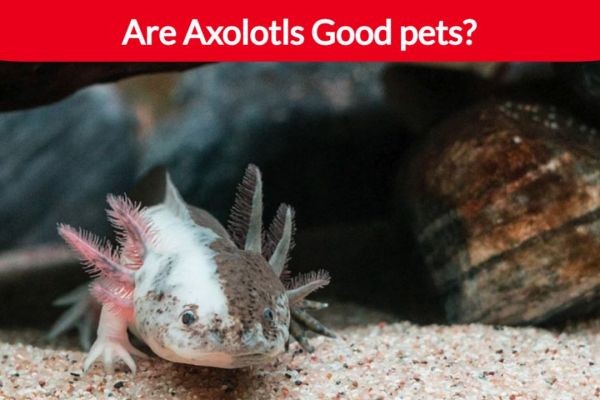Hidden within the Arctic's icy embrace, the Inuit people's traditions reveal a tapestry of survival, spirituality, and community—discover their incredible way of life.
08/14/24 • 100 Views
Inuit traditions span clothing, diet, architecture, and spiritual beliefs, all shaped by their Arctic surroundings. You'll find their attire is crafted from caribou and sealskin, each piece bearing intricate patterns that convey identity. Diets are rich in fish, seal, and whale blubber, showcasing remarkable resourcefulness. Their shelters, like igloos, are marvels of engineering, expertly designed for insulation and ventilation. Hunting and fishing aren't just survival tactics; they are community activities that foster close-knit relationships. Elders play an essential role in passing down knowledge and ensuring cultural continuity. Spiritual beliefs, rooted in animism, emphasize harmony with nature. Discover more about these fascinating traditions.
Key Takeaways
- Traditional Inuit clothing is intricately designed from caribou or sealskin, reflecting cultural identity and heritage.
- The diet consists of protein-rich resources like fish, seals, and whale blubber, showcasing resourcefulness in harsh environments.
- Shelters include igloos crafted from snow blocks, engineered for insulation and ventilation, and modern homes blending traditional and contemporary features.
- Hunting and fishing practices involve traditional tools and communal efforts, ensuring survival and efficient resource use.
- Elders play a crucial role in passing down traditions and knowledge and maintaining cultural continuity through storytelling and community engagement.
Traditional Clothing
When you look at traditional Inuit clothing, you'll notice it's meticulously crafted from caribou or sealskin, essential for enduring the harsh Arctic winters. These materials aren't chosen randomly; they're crucial for their insulating properties and durability. Inuit traditional clothing, especially parkas, is designed with multiple layers to adapt to the extreme cold and seasonal changes of the Arctic environment. Each piece, from parkas to pants, mittens, and footwear, is carefully made to provide maximum warmth and protection.
The intricate thread patterns on Inuit parkas are more than decorative; they communicate the wearer's identity and cultural significance. These patterns can often tell you about the individual's family, status, and even their skills. The use of caribou and sealskin also underscores the Inuit's close relationship with the wildlife they rely on. Hunting these animals not only provides them with essential materials for clothing but also reinforces their deep connection to the land and its fauna.
In essence, every stitch and layer of Inuit traditional clothing reflects a rich heritage and a profound understanding of the Arctic environment, ensuring survival and maintaining cultural continuity.
Diet and Sustenance
Much like their traditional clothing, the Inuit's diet is intricately linked to their environment and survival, relying heavily on the rich, protein-packed resources available in the Arctic. The traditional Inuit diet primarily consists of fish and land animals, such as caribou and musk ox, which are abundant in their harsh environment. With minimal fruits and vegetables available, the Inuit have adapted to a diet that's high in protein and essential nutrients derived from Arctic wildlife.
Reindeer and Arctic hares are also common sources of sustenance, providing essential protein. Seal and whale blubber are key components of the traditional Inuit diet, offering not only protein but also fats that are essential for energy and insulation against the cold. Marine life like seals, walruses, and various fish species are indispensable, supplying the necessary nutrients to endure the Arctic climate.
This protein-rich diet is a demonstration of the Inuit's resourcefulness and deep understanding of their environment. By emphasizing animal sources over plant-based foods, the Inuit have developed a dietary system that ensures their survival in one of the most extreme climates on Earth. Their diet is a remarkable example of how humans can adapt to their surroundings for sustenance and well-being.
Shelter and Architecture
When exploring the shelter and architecture of the Inuit, you'll find that they traditionally constructed igloos from precisely cut snow blocks for winter hunting trips and built turf huts from stones and driftwood as permanent residences. The ingenious design of igloos, featuring a ventilation hole for air circulation, showcases their expertise in creating insulated, temporary homes. In contrast, sealskin tents provided adaptable summer shelter, illustrating the Inuit's resourcefulness in adapting to seasonal changes.
Igloos and Winter Homes
Igloos, crafted from expertly cut snow blocks, served as the Inuit people's essential temporary shelters during their arduous winter hunting expeditions. In the harsh Arctic environment, these winter shelters were vital for survival. The Inuit sourced snow blocks from specific snowbanks, ensuring they used the most suitable material for insulation. These snow structures, though temporary dwellings, were marvels of engineering, designed to withstand brutal winds and sub-zero temperatures.
The construction process involved stacking snow blocks in a spiral pattern, creating a dome-shaped igloo with a small entrance to minimize heat loss. An important feature of these igloos was a ventilation hole at the top, which allowed for proper air circulation, preventing carbon dioxide buildup from the inside fire.
While igloos weren't permanent residences, they provided safe and efficient lodging during winter hunting trips. For more permanent structures, the Inuit built turf huts using stones and driftwood beams, which were used for dwelling and community gatherings. During the summer months, they switched to sealskin tents to maintain mobility while hunting reindeer and gathering berries. This seasonal adaptability showcases the Inuit's resourcefulness and intimate understanding of their environment.
Modern Housing Adaptations
Inuit modern housing adaptations seamlessly blend traditional knowledge with contemporary materials, resulting in durable, energy-efficient homes designed to withstand the Arctic's extreme conditions. You'll find that modern dwellings often include prefabricated homes, semi-detached units, and multi-unit dwellings, aimed at addressing the prevalent issue of overcrowding in Inuit communities.
Traditional igloos have given way to insulated wooden houses with metal roofs, which are far better suited to enduring the harsh Arctic conditions. These homes incorporate energy-efficient features such as solar panels and advanced insulation, ensuring sustainability and reducing the reliance on external energy sources. This is vital in the remote and extreme environments where the Inuit live.
Community planning is the cornerstone of modern Inuit housing developments. These plans take cultural considerations into account, ensuring that the layout and design of neighborhoods reflect Inuit social structures and traditions. Contemporary designs also aim for affordability, making sure that these modern dwellings are accessible to the community.
Inuit architecture today represents a fascinating blend of traditional building techniques and modern materials. This approach not only meets modern living standards but also honors the cultural heritage of the Inuit people, ensuring their traditions are preserved even in contemporary settings.
Hunting and Fishing Practices
Relying on a profound knowledge of their environment, the Inuit people have developed intricate hunting and fishing practices that are essential for their survival in the Arctic. Inuit hunters demonstrate exceptional skill and patience on their hunting trips, using traditional tools like harpoons to catch marine mammals such as seals, walruses, and whales. These hunting techniques are deeply woven into Inuit culture, emphasizing sustainability and respect for the animals they hunt.
In addition to hunting marine mammals, Inuit hunters also track land animals such as caribou and musk oxen, showcasing their expertise in diverse terrains. Fishing practices are equally important, involving the use of harpoons, spears, and nets to capture fish from the icy waters. Fishing holes are meticulously maintained and shared within the community to ensure a continuous supply of fish throughout the year.
Here are some key aspects of Inuit hunting and fishing practices:
- Sustainability: Traditional techniques prioritize ecological balance.
- Respect: There's a profound respect for animal spirits.
- Community Sharing: Fishing holes are communal resources.
- Cultural Integration: Activities like throat singing often accompany communal hunts.
These practices aren't just survival tactics but integral parts of Inuit cultural identity.
Social and Community Structures
Despite the harsh Arctic environment, the social and community structures of the Inuit people are intricately designed around extended family networks and communal support systems that guarantee mutual survival and cultural continuity. At the heart of Inuit social structures are these extended family networks, which foster close-knit relationships and ensure that everyone works together for the common good.
Traditional Inuit communities are often organized around hunting groups, where responsibilities and resources are shared among members. This cooperation is key for survival, as the Arctic's challenging conditions require efficient teamwork and resourcefulness. The communal support system emphasizes reciprocity and sharing, ensuring that food, shelter, and other essentials are available to all, particularly in times of scarcity.
Elders hold a revered place within these communities, as they possess valuable knowledge and experience. They play an important role in passing down traditions, skills, and cultural practices to younger generations. Community gatherings, such as feasts and celebrations, further strengthen these social bonds.
These events provide opportunities for storytelling, cultural expression, and the reinforcement of social norms, thereby maintaining the fabric of Inuit society. Through this intricate web of relationships and mutual support, the Inuit people thrive despite their environment.
Spiritual Beliefs and Practices
Rooted in animism, the spiritual beliefs of the Inuit people revolve around the idea that all natural elements possess a spirit or soul, fostering a deep connection with the environment. This belief system creates a framework where every aspect of nature, from animals to weather patterns, holds spiritual significance. Inuit spiritual beliefs emphasize living in harmony with nature, recognizing that humans and the natural world are interconnected and interdependent.
Shamanism plays an important role in these beliefs. Shamans serve as intermediaries between the human and spirit worlds, performing ceremonies and rituals to communicate with spirits. These rituals often include:
- Hunting ceremonies are held to honor and thank the spirits of animals for successful hunts.
- Harvesting rituals to maintain the continued abundance of resources.
- Healing ceremonies conducted by shamans to cure illnesses by appeasing or negotiating with spirits.
- Drum dancing and throat singing serve as spiritual expressions, connecting participants with their ancestors and the spirit world.
These practices underscore the importance of maintaining balance and respect within the spiritual and physical realms. Through their ceremonies and rituals, the Inuit people aim to live in harmony with nature, ensuring the well-being of their community and environment.
Conclusion
You've now seen how Inuit traditions shape their unique way of life. Imagine sharing a meal of freshly caught Arctic char with an Inuit family in their cozy igloo, the warmth of their hospitality cutting through the icy landscape. This isn't just survival; it's a reflection of their resilience and deep connection to nature. By understanding these traditions, you gain a deeper appreciation for the rich cultural fabric that defines the Inuit people.









